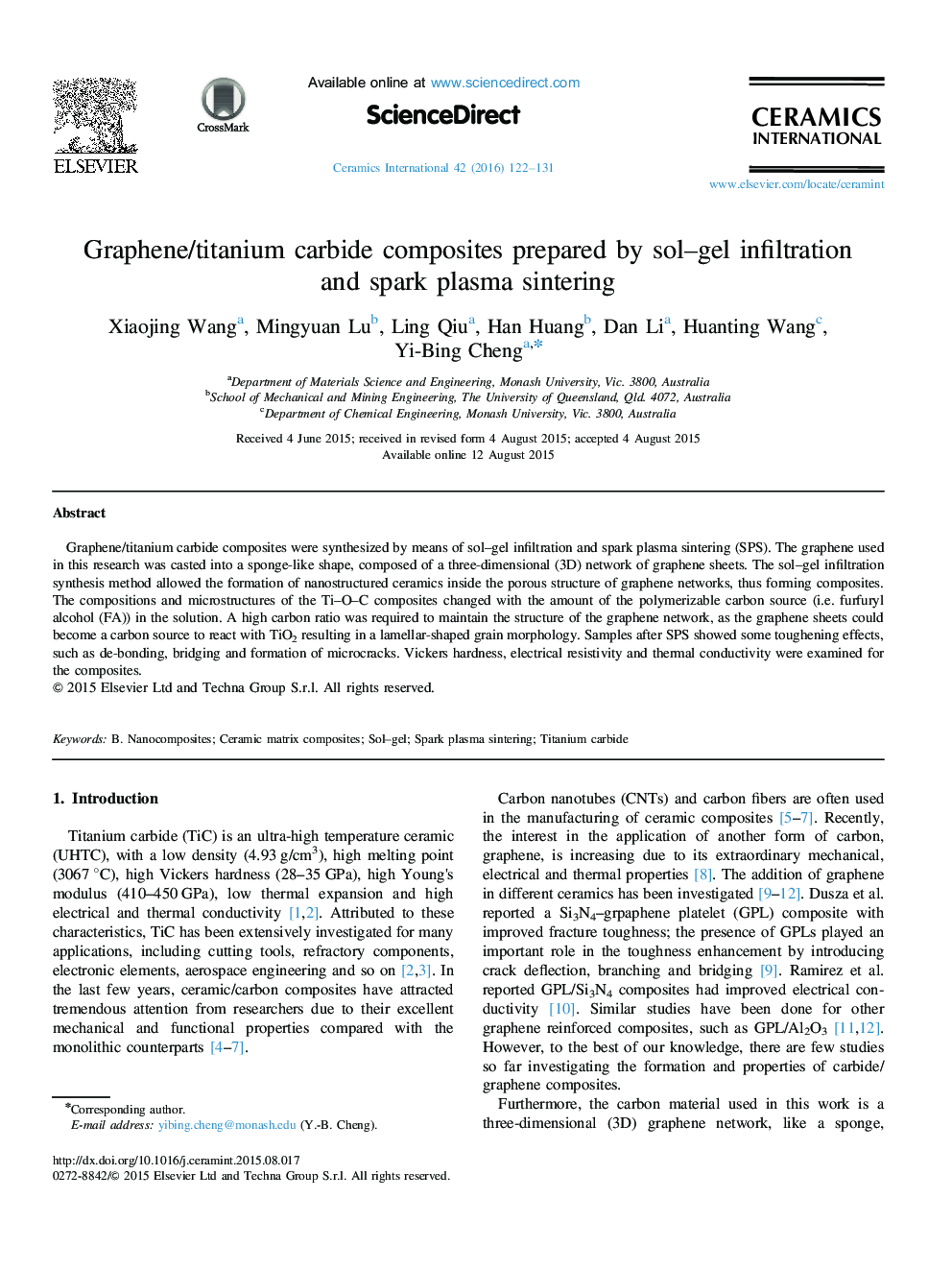| Article ID | Journal | Published Year | Pages | File Type |
|---|---|---|---|---|
| 1459412 | Ceramics International | 2016 | 10 Pages |
Graphene/titanium carbide composites were synthesized by means of sol–gel infiltration and spark plasma sintering (SPS). The graphene used in this research was casted into a sponge-like shape, composed of a three-dimensional (3D) network of graphene sheets. The sol–gel infiltration synthesis method allowed the formation of nanostructured ceramics inside the porous structure of graphene networks, thus forming composites. The compositions and microstructures of the Ti–O–C composites changed with the amount of the polymerizable carbon source (i.e. furfuryl alcohol (FA)) in the solution. A high carbon ratio was required to maintain the structure of the graphene network, as the graphene sheets could become a carbon source to react with TiO2 resulting in a lamellar-shaped grain morphology. Samples after SPS showed some toughening effects, such as de-bonding, bridging and formation of microcracks. Vickers hardness, electrical resistivity and thermal conductivity were examined for the composites.
